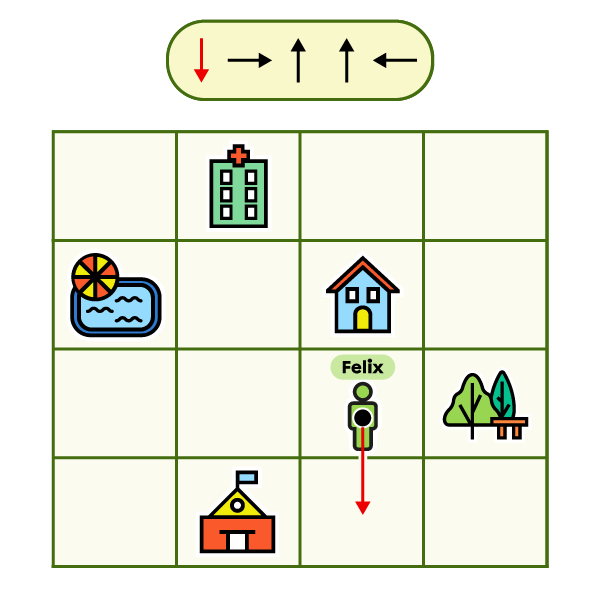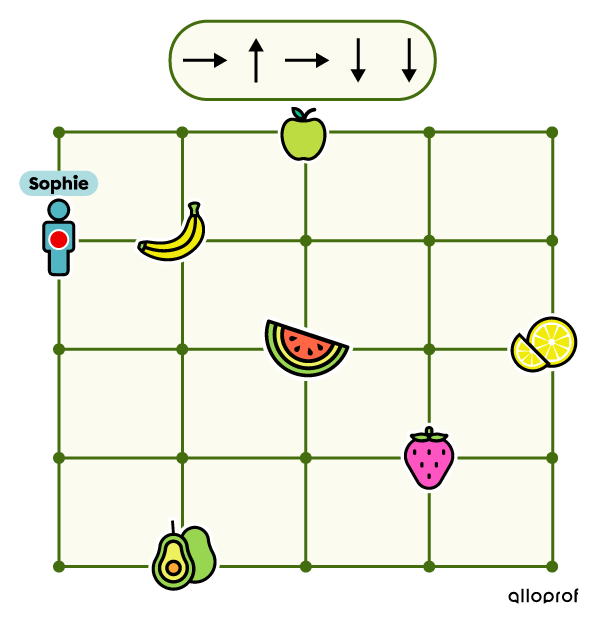A plane is a tracking system that can be used for orientation.
Images can be placed in a plane. They can be in boxes, called regions, or on points that are formed where lines meet.
The images are located in regions.

The images are located on points.

Orientation arrows indicate the direction for each movement required in a plane.
| Orientation arrows | |
|---|---|
|
↓ |
|
|
↑ |
Move up |
|
← |
Move left |
|
→ |
Move right |
Depending on the position of the images in the plane, the movement will occur from one square to the next (from one region to the next) or from one point to the next.
To follow a route in a plane, first find where it begins. Next, look at the first orientation arrow and move in the correct direction. Continue along the route from the new position. Look at each orientation arrow, one after the other, and carefully follow the order in which they are placed.
Use the orientation arrows to trace Felix's route to his final destination.

|
|
|
|
|
|
|
|
|
|
|
|
Use the orientation arrows to trace Sophie's route to her final destination.

|
|
|
|
|
|
|
|
|
|
|
|
Moving in a plane can also mean following the cardinal points: north (N), south (S), east (E), and west (W). The compass can help determine the direction for each cardinal point.
For example:

A plane is a tracking system that can be used for orientation.
Images can be placed in a plane. They can be in boxes, called regions, or on the points formed where lines meet.
The images are located in regions.

The images are located on points.

Orientation arrows indicate the direction for each movement required in a plane.
| Orientation arrows | |
|---|---|
|
↓ |
Move down |
|
↑ |
Move up |
|
← |
Move left |
|
→ |
Move right |
Depending on the position of the images in the plane, the movement can occur from one square to the next (from one region to the next) or from one point to the next.
To follow a route in a plane, first find where it begins. Next, look at the first orientation arrow and move in the correct direction. Continue along the route from the new position. Look at each orientation arrow, one after the other, and carefully follow the order in which they are placed.
Use the orientation arrows to trace Felix's route to his final destination.

|
|
|
|
|
|
|
|
|
|
|
|
Use the orientation arrows to trace Sophie's route to her final destination.

|
|
|
|
|
|
|
|
|
|
|
|
Moving in a plane can also mean following the cardinal points: north (N), south (S), east (E), and west (W). The compass can help determine the direction for each cardinal point.
For example:
























